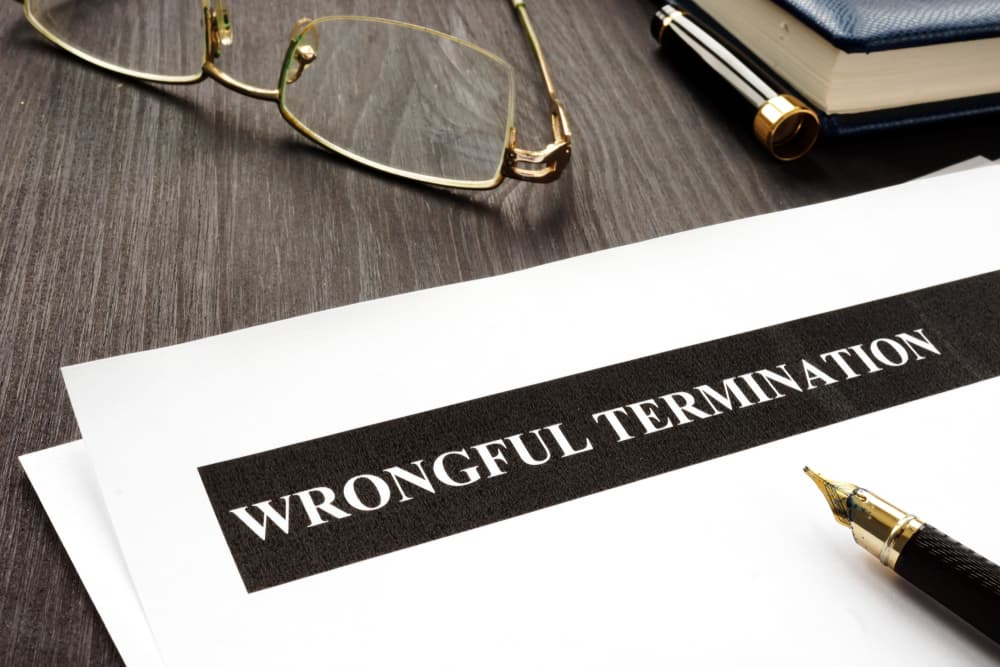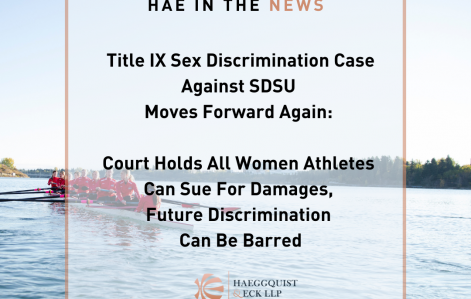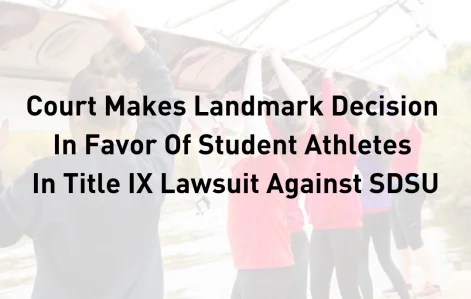Wrongful termination cases can be challenging to prove and win, but with the right approach and understanding of California law, proving your case is possible.
Whether your employer dismissed you for discriminatory reasons, as an act of retaliation, or due to a breach of contract, a San Diego wrongful termination lawyer can gather and present evidence for you.
Schedule a Free Case Evaluation Today!
Understanding the Grounds for Wrongful Termination in California
To effectively approach a wrongful termination case, it’s best to first understand what wrongful termination means under California law. While many might believe that any termination they feel is unfair qualifies as wrongful, the legal definition is more specific.
Under California law, wrongful termination can occur due to several distinct reasons: discrimination, retaliation, violation of public policy, or breach of contract.
Each of these grounds has its own elements an employee needs to establish to make a strong wrongful termination claim.
Discrimination as a Ground for Wrongful Termination
Discrimination is one of the most common grounds for wrongful termination. Under California law, it is illegal for an employer to terminate an employee based on certain protected characteristics.
These characteristics include race, gender, age (particularly for employees over 40), national origin, religion, disability, sexual orientation, gender identity, marital status, pregnancy, and medical conditions.
Discrimination-based wrongful termination occurs when an employer’s decision to terminate an employee is motivated, in whole or in part, by one of these protected characteristics.
For instance, if an employer fires an employee shortly after they reveal their pregnancy, or an employer disproportionately fires employees from a certain racial background, these situations can constitute discrimination.
Retaliation as a Ground for Wrongful Termination
Another common ground for wrongful termination is retaliation. California law protects employees from being terminated for engaging in legally protected activities.
This includes reporting violations of the law (whistleblowing), filing a complaint about harassment or discrimination, participating in an investigation into the employer’s practices, or any other forms of standing up against legal violations within the company.
The key to a retaliation claim is to prove a causal link between the employee’s protected activity and the termination. For example, if an employee files a complaint about unsafe working conditions and is shortly thereafter fired without a clear, unrelated reason, this can be retaliation.
Violation of Public Policy as a Ground for Wrongful Termination
Termination in violation of public policy involves reasons that are against fundamental policies in state or federal law. This includes firing an employee for refusing to participate in illegal activities, exercising a statutory right like voting or taking family leave, or fulfilling a statutory obligation like jury duty.
For instance, if an employee gets fired for refusing to engage in fraudulent practices that their employer was pushing, this is termination in violation of public policy.
Breach of Contract as a Ground for Wrongful Termination
The last key ground for wrongful termination is a breach of contract. This applies when an employee has an employment contract that outlines specific reasons for a valid termination or specifies a process employers must follow before a termination.
If an employer fails to adhere to these contractual terms when terminating the employee, it can be considered a breach of contract.
For example, if an employment contract states that an employee can only face termination for certain types of misconduct and they lose their job without any such misconduct occurring, this can constitute a breach of contract.
In understanding these grounds, it’s important for anyone who believes they have been wrongfully terminated to closely examine the circumstances of their termination and see if they fit into any of these categories.
Knowledge of these specifics is the first step in determining whether there might be a viable wrongful termination claim under California law.
Gather Comprehensive Evidence
Evidence is the next step in proving wrongful termination.
This can include:
- Emails and Written Communication: Save any emails or written documents that relate to your job performance, any disciplinary actions, or reasons given for your termination.
- Witness Statements: Colleagues or other individuals who can attest to the circumstances of your termination can provide valuable witness statements.
- Performance Reviews: If you have a history of positive performance reviews, these can counter claims that your termination was performance-related.
- Company Policies and Your Employment Contract: Review these documents for any clauses that might have been violated by your employer.
Document Everything
From the moment you suspect wrongful termination, start documenting everything:
- Keep a Record of Events: Write down dates, times, and details of any relevant incidents, conversations, or meetings.
- Record Post-Termination Developments: This includes efforts to find new employment, as well as any emotional or financial impacts you’ve experienced.
Establishing a Connection Between Your Termination and the Illegal Reason
To prove wrongful termination, you must link your dismissal to the illegal reason:
Proving Discrimination in Wrongful Termination

When your wrongful termination claim is due to discrimination, the key is to demonstrate that you were treated differently than other employees who are not in your protected class.
Protected classes can include race, gender, age, disability, sexual orientation, and more.
Here’s how you can build your case:
- Comparative Evidence: Collect examples showing how similarly situated colleagues outside your protected class received more favorable treatment. This can include differences in promotions, pay raises, disciplinary actions, or the reasons given for termination.
- Pattern of Behavior: Document any patterns of discriminatory behavior by your employer. This might involve a history of derogatory comments, unequal policies, or a lack of diversity in promotions.
- Direct Evidence of Discrimination: Although rare, direct evidence like emails, messages, or statements explicitly mentioning your protected class in relation to your termination is highly compelling.
- Expert Testimony: In some cases, an expert in employment practices might be necessary to analyze and explain how the actions of your employer were discriminatory based on industry standards.
Proving Retaliation in Wrongful Termination
Retaliation claims require you to link your termination to a protected activity you engaged in, like filing a complaint, whistleblowing, or participating in an investigation.
To prove retaliation, consider:
- Timeline of Events: Create a detailed timeline showing when you engaged in the protected activity and when the termination happened. A close temporal proximity can suggest a retaliatory motive.
- Evidence of Good Standing: Demonstrate that you had a positive employment record before your involvement in the protected activity. This may include performance evaluations, commendations, or other recognition.
- Employer’s Shifting Explanations: Document any changes in the reasons provided by your employer for your termination. Inconsistent or shifting explanations can be a sign of a pretext for retaliation.
- Witness Testimony: Statements from coworkers or supervisors who can attest to your performance and any changes in treatment after your protected activity can strengthen your case.
Proving a Violation of Public Policy in Wrongful Termination
Claims based on public policy violations involve proving that your termination resulted from you exercising a legal right or fulfilling a legal duty.
Here’s how to approach this:
- Linking Termination to Legal Activity: Show a direct link between your termination and your engagement in activities protected by public policy, such as jury duty, voting, whistleblowing, or filing for workers’ compensation.
- Documenting Employer’s Knowledge: Provide evidence that your employer was aware of your participation in these activities. This can be through emails, official requests for time off, or any written communication.
- Absence of Other Legitimate Reasons: Demonstrate that other reasons for termination were lacking or insufficient. This helps to reinforce the connection between your legal activity and the termination.
Proving Breach of Contract in Wrongful Termination
If your claim involves a breach of contract, you need to prove that the employer breached the terms of your employment contract.
This involves:
- Contract Terms: Clearly outline the specific terms of your contract that your employer breached. This can be a written contract, an implied contract derived from company policy manuals, or a verbal agreement.
- Evidence of Breach: Provide documentation or testimony that shows how your employer failed to follow the contract terms. This can be a failure to adhere to a promised disciplinary process, not respecting a stipulated job duration, or disregarding agreed-upon job responsibilities.
- Link to Termination: Establish a clear connection between the breach of contract and your termination. It should be evident that your firing was a direct result of the contract terms not being followed.
In each of these scenarios, gathering comprehensive evidence and presenting a well-structured argument is necessary. A lawyer can assist in this process, ensuring your case is as strong as possible and guiding you through the legal complexities to seek justice for your wrongful termination.
Legal Support and Representation
The right employment attorney not only gives a legal assessment of your situation but they can assist with every step of the process.
Case Evaluation: Understanding the Strength of Your Evidence
When you approach a lawyer with a wrongful termination claim, the first step they will take is to evaluate your case. This process involves a thorough review of all the facts and evidence you have to support your claim.
Here’s what’s involved in this phase:
- Reviewing Employment Records: Your lawyer will examine your employment history, including performance reviews, commendations, or any disciplinary records.
- Analyzing Communication: They will look at emails, messages, and other communications between you and your employer for any evidence of wrongful termination.
- Assessing Witness Statements: If there are coworkers or other people who can support your claim, your lawyer will consider their statements.
- Identifying Additional Evidence Needs: Your lawyer will determine if there is a need for more evidence, such as more documentation or additional witness testimonies.
- Legal Interpretation: They will interpret the laws related to wrongful termination and how they apply to your specific circumstances.
Filing a Claim: Navigating the Preliminary Procedures
In many wrongful termination cases, particularly those involving discrimination or retaliation, you’re required to file a claim with the Department of Fair Employment and Housing (DFEH) before you can proceed with a lawsuit.
Your lawyer will guide you through this process:
- Preparing the Claim: They will assist in gathering all necessary information and documents to file a comprehensive claim.
- DFEH Process Guidance: Your lawyer will explain the process of the DFEH investigation and what to expect.
- Timely Filing: Ensuring that your claim gets filed within the relevant deadlines is necessary, and your lawyer will make sure that your claim meets these deadlines.
- Response to Findings: Once the DFEH issues its findings, your lawyer will review them and decide on the next steps.
Legal Strategy: Creating a Path to Success
A large part of a lawyer’s role is developing a legal strategy tailored to your case.
This involves:
- Evaluating Settlement Options: Your lawyer will assess any settlement offers and advise whether they are in your best interest.
- Preparing for Litigation: If a settlement isn’t possible, they will prepare to take the case to court.
- Strategic Planning: Your lawyer will plan the best approach to present your case, including which evidence to highlight and which legal arguments to focus on.
- Adaptability: As your case progresses, your lawyer may need to adjust the strategy based on new evidence or changes in circumstances.
Representation: Advocating for You in Court
If your wrongful termination case goes to court, you need a lawyer to represent you.
Here’s what they will do:
- Filing the Lawsuit: They will handle the technicalities of filing a lawsuit, ensuring they meet all legal requirements and deadlines.
- Pre-Trial Preparations: This includes gathering evidence, preparing witness testimonies, and filing necessary motions.
- Court Representation: Your lawyer will represent you during the trial, presenting your case, cross-examining witnesses, and arguing on your behalf.
- Post-Trial Actions: Depending on the outcome, they may need to assist with appeals or the enforcement of a judgment.
Contact a Wrongful Termination Lawyer as Soon as Possible

Termination Attorney
Proving wrongful termination requires a clear understanding of the legal grounds, thorough evidence gathering, and strategic legal action. An experienced employment law lawyer can guide you through each step, strengthening your case and working toward a favorable outcome.





